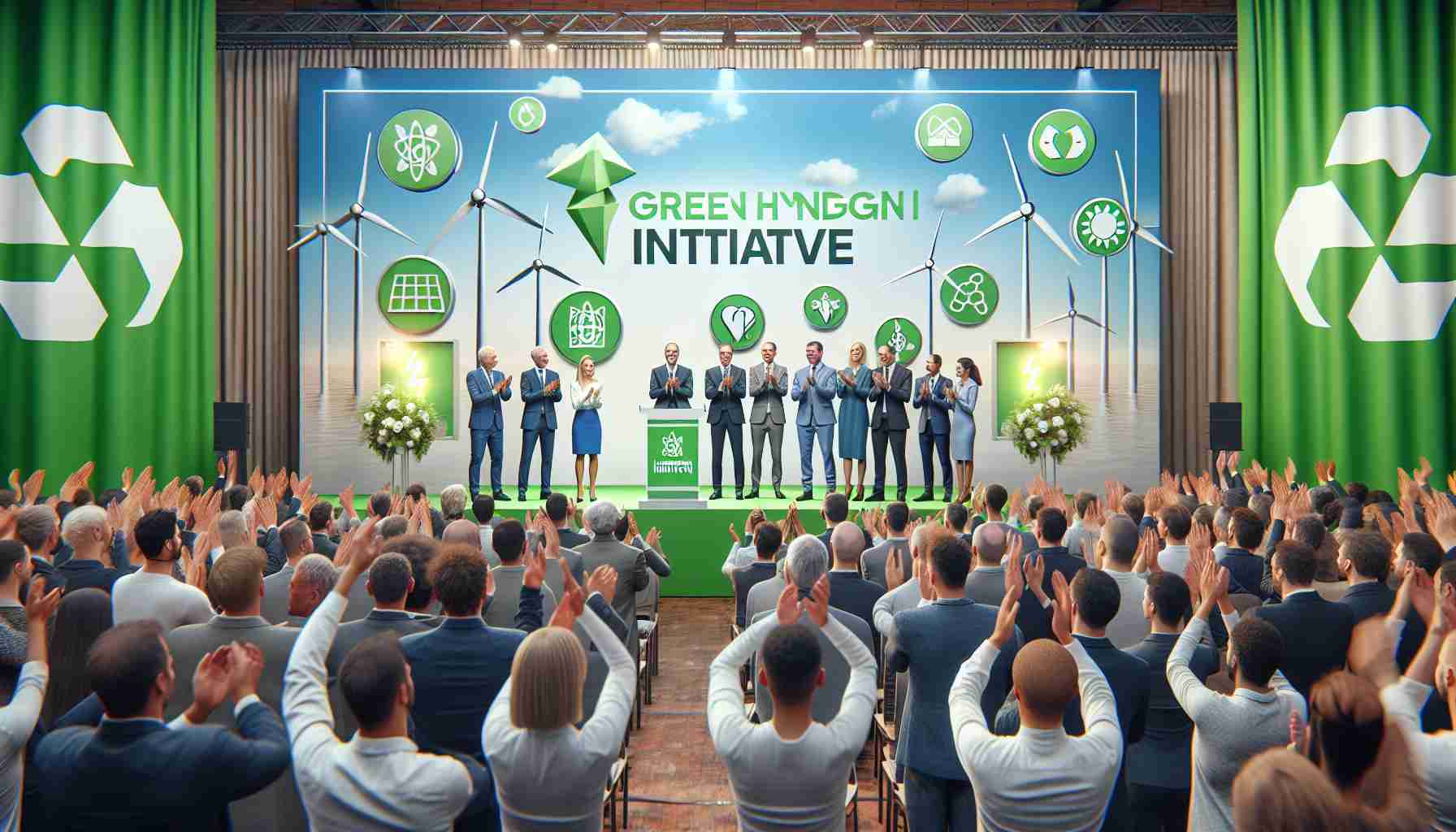In a significant move towards sustainable energy, the head of Poland’s Industrial Development Agency (ARP) has announced the plans to establish a green hydrogen production facility in Silesia, a region known for its industrial past. This initiative highlights the increasing commitment to hydrogen as a clean energy solution.
Recent research indicates a monumental growth trajectory for the global green hydrogen market, projected to rise from $6.26 billion currently to an astounding $134.38 billion by 2033. Unlike traditional hydrogen production methods, such as grey or blue hydrogen that rely on fossil fuels, green hydrogen is generated through the electrolysis of water powered by renewable energy sources like solar and wind. This clean fuel has diverse applications, notably in transportation, industrial processes, and energy storage.
ARP’s head, Michał Dąbrowski, emphasized that this factory will be a collaborative project involving ARP and several investment partners. The initiative is poised to revolutionize Poland’s economic landscape, particularly benefiting the transport and environmental sectors. The specific location of the plant remains undisclosed, and additional project partners have not yet been named.
Poland, while being a major producer of hydrogen predominantly from natural gas, is now strategically pivoting towards greener alternatives. The investment comes at a time when neighboring Germany has made substantial progress in integrating hydrogen technology within its automotive industry.
Unlocking the Future: Tips, Life Hacks, and Facts About Green Hydrogen
As the world moves toward more sustainable energy solutions, Poland’s initiative to establish a green hydrogen production facility marks a significant step in the right direction. Green hydrogen promises not only to reduce carbon emissions but also to drive economic growth. Here are some insightful tips, life hacks, and fascinating facts related to green hydrogen and its broader implications for our lives and the environment.
1. Understanding Green Hydrogen: What You Need to Know
Green hydrogen is made through the electrolysis of water using renewable energy sources. This process involves separating water into hydrogen and oxygen, with electricity derived from solar or wind energy. Understanding this process is essential as it underscores the importance of using clean energy in today’s rapidly changing landscape.
2. The Numerous Benefits of Green Hydrogen
Green hydrogen’s versatility makes it invaluable across various sectors:
– Transportation: It can power fuel-cell vehicles, significantly lowering pollution levels.
– Industrial applications: It can be used in steel production and chemical manufacturing, reducing reliance on fossil fuels.
– Energy storage: Green hydrogen can store excess renewable energy, balancing supply and demand.
Tip: Consider Investing in Renewable Energy
As individuals, you can support the shift to green hydrogen by investing in renewable energy solutions for your home, such as solar panels. Not only do these technologies help reduce your carbon footprint, but they can also lead to long-term savings on energy costs.
3. A Growing Market: Fascinating Facts
The green hydrogen market is expected to grow remarkably, from $6.26 billion to $134.38 billion by 2033. This reflects not just the demand for sustainable energy, but also increasing innovation in technology and decreasing costs associated with renewable energy production.
4. Challenge Yourself to Go Green
Adopting a sustainable lifestyle can be a personal challenge. Start small by incorporating habits such as reducing single-use plastics, optimizing energy consumption in your home, or even using public transport more frequently to minimize fossil fuel utilization.
5. Collaborations and Partnerships Are Key
Success in the green hydrogen sector heavily relies on collaborations. ARP’s initiative, involving various investment partners, demonstrates the power of teamwork in driving innovation forward. Stay updated on local initiatives and consider how you might contribute or participate in community renewable projects.
6. Connect with the Community
Getting involved with local environmental groups or renewable energy cooperatives can provide insights and foster collaborative efforts for promoting green hydrogen and sustainability at large.
For those interested in following this transformative trend in energy production, you can explore more opportunities and advancements related to renewable energy at Energy.gov.
By understanding and embracing green hydrogen, we not only contribute to a more sustainable future but also find new ways to innovate and inspire change within our communities.

